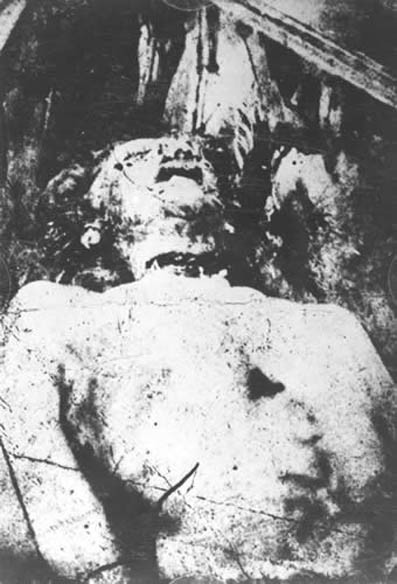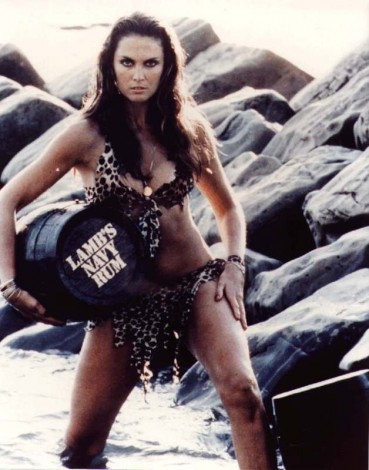 Jack the Ripper’s double dip and letter from the inferno. 
One hundred twenty-one years ago today, residents of London began to understand that a serial killer was stalking the dark streets of Whitechapel and London. Jack the Ripper had killed before—he had murdered Mary Ann Nichols in late August, and Annie Chapman the second week of September. But when two more women died in the same night Londoners flew into a panic. A malevolent entity had beset their city and suddenly it was clear his thirst would not easily be slaked. The two murders were called “The Double Event.” While some historians feel they were unconnected, Ripper orthodoxy holds that the second murder occurred because the first was unconsummated. Which is to say, the Ripper was robbed of a chance to inflict his signature mutilation on the first victim because he was interrupted by a passerby, so he immediately went out and found a second victim to kill in the intricate method his compulsion demanded.
The first victim, Elizabeth Stride, was found at 1:00 a.m. in Dutfield’s Yard, in Whitechapel. The yard was a gated area ringed by several businesses and a few residences. Imagine a small parking lot. The gates were kept closed at night, but not locked. This made it easy for residents to access the yard, and for policemen on their nightly beats to inspect it, but it was also unlit. A Pall Mall Gazette article from 1890 described the site: “When you push open the gate it is as dark as Erebus; when the gate is pushed back there is an effectual screen from any prying passer by.” When Stride’s body was discovered blood was still flowing from her slashed throat. She had been slain minutes—or seconds—earlier, and the man who had stumbled over her body later told police that, though he could see nothing because the yard was pitch black, he believed the killer was still there.
Less than an hour later Jack the Ripper found the privacy he sought—and another victim. Catherine Eddowes had spent the night of September 29 in the drunk tank at Bishopgate police station. The cops let her go just about the time Elizabeth Stride was being murdered not far away in Whitechapel. At 1:35 a.m. Eddowes was seen by three witnesses having a conversation with an unidentified male. Her body was found at 1:45, so police of the time and historians of today agree she was talking with the Ripper. In those ten minutes he walked with Eddowes to secluded  Mitre Square, just inside the London city limits, then killed her, mutilated her, and removed her kidney. The kidney—or part of it—resurfaced along with a letter addressed to George Lusk, head of the Whitechapel Vigilance Committee. The letter bore a header “From Hell,” and the text boasted of how nice the missing piece of kidney tasted fried. The letter was signed: “Catch me when you can.” But neither Lusk nor anyone else managed it. And the killings continued. Mitre Square, just inside the London city limits, then killed her, mutilated her, and removed her kidney. The kidney—or part of it—resurfaced along with a letter addressed to George Lusk, head of the Whitechapel Vigilance Committee. The letter bore a header “From Hell,” and the text boasted of how nice the missing piece of kidney tasted fried. The letter was signed: “Catch me when you can.” But neither Lusk nor anyone else managed it. And the killings continued.
|
 |

The headlines that mattered yesteryear.
2003—Hope Dies
Film legend Bob Hope dies of pneumonia two months after celebrating his 100th birthday. 1945—Churchill Given the Sack
In spite of admiring Winston Churchill as a great wartime leader, Britons elect
Clement Attlee the nation's new prime minister in a sweeping victory for the Labour Party over the Conservatives. 1952—Evita Peron Dies
Eva Duarte de Peron, aka Evita, wife of the president of the Argentine Republic, dies from cancer at age 33. Evita had brought the working classes into a position of political power never witnessed before, but was hated by the nation's powerful military class. She is lain to rest in Milan, Italy in a secret grave under a nun's name, but is eventually returned to Argentina for reburial beside her husband in 1974. 1943—Mussolini Calls It Quits
Italian dictator Benito Mussolini steps down as head of the armed forces and the government. It soon becomes clear that Il Duce did not relinquish power voluntarily, but was forced to resign after former Fascist colleagues turned against him. He is later installed by Germany as leader of the Italian Social Republic in the north of the country, but is killed by partisans in 1945.
|

|
|

It's easy. We have an uploader that makes it a snap. Use it to submit your art, text, header, and subhead. Your post can be funny, serious, or anything in between, as long as it's vintage pulp. You'll get a byline and experience the fleeting pride of free authorship. We'll edit your post for typos, but the rest is up to you. Click here to give us your best shot.

|
|


 Mitre Square, just inside the London city limits, then killed her, mutilated her, and removed her kidney. The kidney—or part of it—resurfaced along with a letter addressed to George Lusk, head of the Whitechapel Vigilance Committee. The letter bore a header “From Hell,” and the text boasted of how nice the missing piece of kidney tasted fried. The letter was signed: “Catch me when you can.” But neither Lusk nor anyone else managed it. And the killings continued.
Mitre Square, just inside the London city limits, then killed her, mutilated her, and removed her kidney. The kidney—or part of it—resurfaced along with a letter addressed to George Lusk, head of the Whitechapel Vigilance Committee. The letter bore a header “From Hell,” and the text boasted of how nice the missing piece of kidney tasted fried. The letter was signed: “Catch me when you can.” But neither Lusk nor anyone else managed it. And the killings continued.



































































